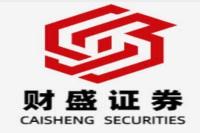券商并购浪潮:重塑行业格局,展望未来机遇 (Meta Description: 券商并购, 证券行业整合, 投资银行, 证券板块, 国泰君安, 海通证券, 浙商证券, 国联证券, 并购重组)
Imagine a rapidly evolving landscape, where strategic alliances and mergers redefine the very fabric of an industry. This isn't science fiction; it's the exhilarating reality of the Chinese securities market in late 2023. The air crackles with anticipation as major players like Guotai Junan, Haitong Securities, and Zheshang Securities forge ahead with ambitious mergers and acquisitions (M&A), reshaping the competitive landscape and creating exciting investment opportunities for savvy investors. This isn't just a shuffle of companies; it's a strategic repositioning for dominance, a testament to China's commitment to nurturing world-class investment banks. The pace of these deals is stunning — a whirlwind of shareholder meetings, regulatory approvals, and triumphant press releases. But beneath the surface lies a complex interplay of regulatory reforms, economic incentives, and the ambition to compete on a global stage. This deep-dive analysis will dissect the recent M&A frenzy, exploring the motivations behind the deals, the potential synergies, and the long-term implications for the Chinese securities industry, offering you unparalleled insights into this pivotal moment in market history. Get ready to unlock the secrets behind this seismic shift, understand the risks and rewards, and position yourself for success in this dynamic and transformative market. We'll be dissecting the recent flurry of activity, revealing the hidden drivers, and unveiling the strategies that could lead to the next big winner. Think of this as your front-row seat to the future of Chinese finance – are you ready to take a closer look?
券商并购重组:加速整合的背后动力
The recent surge in mergers and acquisitions (M&A) activity within the Chinese securities sector isn't a random occurrence; it's a carefully orchestrated response to a confluence of factors. The “new nine articles” (新“国九条”), issued in April 2023, provided a clear mandate: encourage consolidation among leading firms to enhance their global competitiveness. This policy directive, coupled with a broader push towards building world-class investment banks, has acted as a powerful catalyst. It’s not just about getting bigger; it's about achieving critical mass to compete effectively on the international stage.
This drive for consolidation isn't solely driven by government policy. The securities industry, like many others, faces pressure to improve profitability and efficiency. By merging, firms can achieve economies of scale, reduce operational redundancies, and streamline their businesses. This is especially critical in a market characterized by intense competition and increasingly sophisticated investors. Think of it as a strategic game of chess, where each merger represents a pivotal move to secure a more advantageous position on the board.
Furthermore, these mergers often involve a strategic fit, combining complementary strengths. For instance, the merger of Guotai Junan and Haitong Securities brought together two giants with strong expertise in different areas, creating a powerhouse with unparalleled breadth and depth. This strategic synergy – the "1+1>2" effect – is a key driver behind many of these deals. It's not simply about adding numbers; it’s about creating a truly holistic entity that’s greater than the sum of its parts.
Finally, the recent M&A activity reflects a broader trend of industry consolidation globally. As markets become more interconnected and competition intensifies, firms are increasingly opting for mergers to gain a competitive edge. The Chinese securities market is simply following this global trend, adapting to the changing dynamics of the international financial landscape. It’s a move towards global competitiveness, a necessary evolution in a world where standing still is equivalent to falling behind.
重点案例分析:国泰君安与海通证券的合并
The Guotai Junan and Haitong Securities merger stands out as a landmark deal, representing the largest A+H dual-listing merger in Chinese capital market history. The swiftness of the merger, completed within months, is remarkable. This speed reflects the strong commitment from both firms and the supportive regulatory environment.
This merger created a behemoth, combining two of China's leading securities firms. The combined entity boasts significantly increased assets, net assets, and capital, making it a formidable competitor on the global stage. The combined client base and expanded network, spanning key regions throughout China, provide a foundation for future growth. It's a clear demonstration of the power of strategic collaboration, a testament to the potential of synergistic mergers.
However, the success of this merger will depend on several factors, including the smooth integration of operations, the retention of key talent, and the ability to leverage the combined resources to generate increased value for shareholders. Successful integration is crucial; it's not just about uniting two firms; it's about fostering a seamless, unified entity that can operate effectively as one. The challenges involved in this are significant but manageable with effective planning and execution.
浙商证券与国都证券:区域扩张与战略布局
The acquisition of a 34.25% stake in Guodu Securities by Zheshang Securities represents a strategic expansion beyond geographical boundaries. This move allows Zheshang Securities to extend its reach and consolidate its position in the market. The acquisition isn’t merely about expanding market share; it’s about gaining access to a new network and expertise, creating a powerful synergy that will propel their growth.
By combining their resources and expertise, Zheshang and Guodu can better serve their clients and create new opportunities for growth. This move is a strategic investment, a calculated risk with the potential for significant rewards. It's a paradigm shift in their operational strategy, creating a new chapter in their growth story.
This acquisition highlights the importance of strategic acquisitions in driving growth and expansion in the securities industry. It's a demonstration of the willingness of firms to invest strategically to secure their future success. It's a bold statement, a decisive move to secure a stronger footing in a competitive market.
券商并购对投资者意味着什么?
The wave of M&A activity in the Chinese securities sector presents both opportunities and challenges for investors. For those with a long-term perspective, the consolidation of the industry creates opportunities for investment in larger, more diversified, and potentially more profitable firms. It's an opportunity to participate in the reshaping of the industry, to bet on the winners in this new landscape.
However, investors must also be aware of the risks associated with M&A activity. The integration of companies can be complex and challenging, and there's always the risk that the combined entity may not perform as well as expected. The challenges of integrating different cultures, systems, and business models should not be underestimated. It's a high-stakes game, and not every merger proves to be successful.
Careful due diligence and a thorough understanding of the individual companies involved are essential for making informed investment decisions. The success of any investment depends on careful research and a realistic assessment of the risks and rewards. It requires a keen eye for detail and a clear understanding of the industry's dynamics.
常见问题解答 (FAQ)
Q1: Will all smaller securities firms be acquired?
A1: No. While consolidation is a trend, many smaller firms will continue to operate and even thrive by focusing on niche markets or specializing in certain areas. Differentiation is key for these firms. The key is adaptability and innovation.
Q2: What are the potential risks of these mergers?
A2: Potential risks include integration challenges, cultural clashes, loss of key personnel, and potential regulatory hurdles. Careful planning and execution are crucial for a successful merger. It's a complex process with many potential pitfalls.
Q3: How will these mergers impact retail investors?
A3: The impact will likely be positive in the long run, as larger, more efficient firms may offer improved services and more competitive pricing. However, there might be short-term disruptions during the integration process. The long-term benefits outweigh the short-term inconveniences.
Q4: Are there any specific investment strategies for this trend?
A4: Investors could consider focusing on firms involved in successful mergers or those anticipated to be acquired. However, rigorous due diligence is essential. Thorough research and a balanced approach are key to success.
Q5: How will these mergers affect competition in the market?
A5: While the number of players will decrease, competition will likely remain intense among the larger firms. Innovation and service differentiation will be key to success in this new competitive landscape. It’s a race to the top, and only the most effective will prevail.
Q6: What is the future outlook for the Chinese securities industry?
A6: The future looks bright, with a more consolidated and internationally competitive industry. However, navigating regulatory changes and adapting to market dynamics will be crucial for success. It is a dynamic environment, requiring continuous adaptation and responsiveness to change.
结论
The recent surge in M&A activity in the Chinese securities sector marks a pivotal moment in the industry's evolution. Driven by government policy, the need for increased efficiency and profitability, and the pursuit of global competitiveness, these mergers are reshaping the industry landscape. While risks exist, the potential rewards are significant. For investors, understanding these dynamics and making informed decisions is crucial for navigating this exciting and transformative period. The future of the Chinese securities sector is bright, but success will require agility, strategic foresight, and the ability to effectively capitalize on this evolving market.



